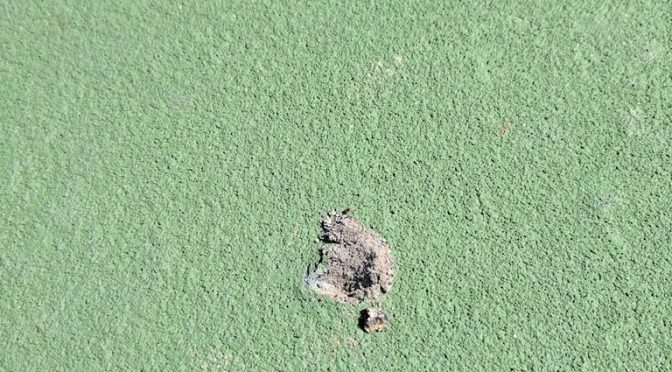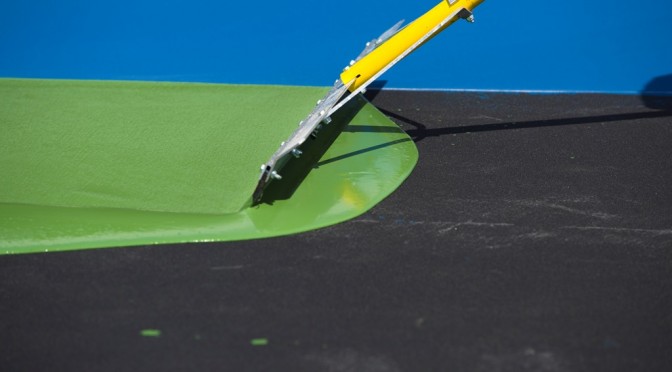Another common issue seen on athletic court surfaces arises from asphalt impurities, most commonly clay balls. In this bulletin, we will explain the occurrence of asphalt impurities & clay balls on sports court surfaces.
The appearance of clay balls begin with small bumps that appear in random areas of the court surface. When you push on these bumps, they feel hard and do not give. If you carefully cut into the bumps, you should discover a small pile that looks like ash.
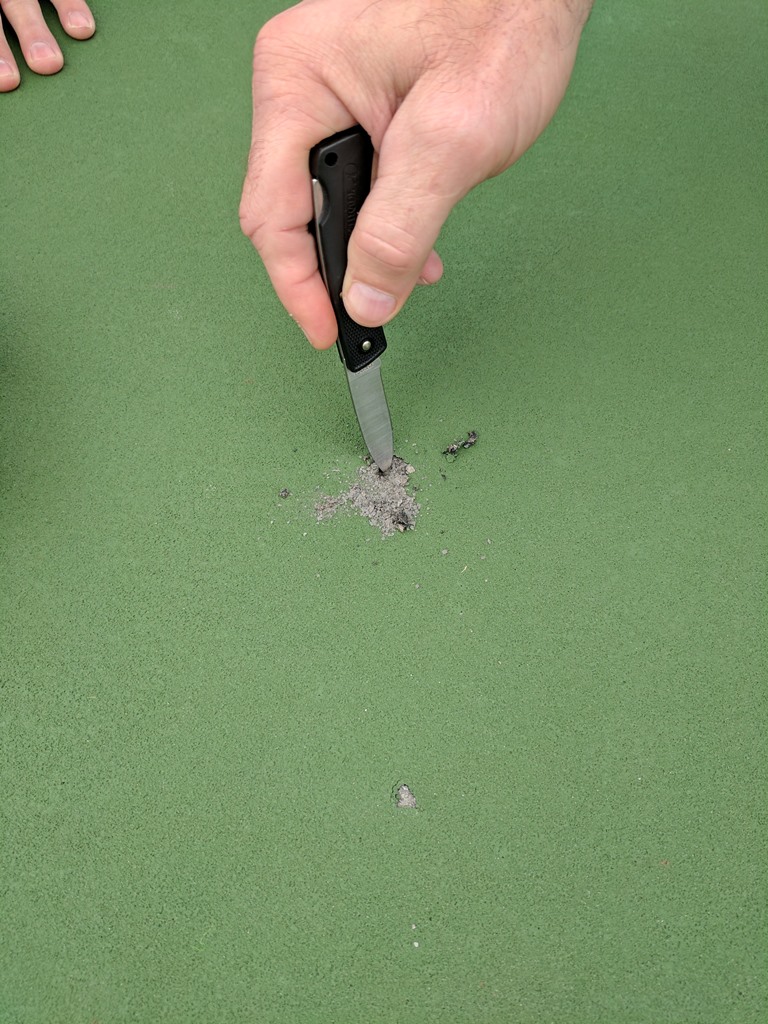
How to clay ball deposits get below the court surface?
Asphalt is made up of rock (mostly limestone, with some other aggregates). It is held together by asphalt binder, derived from the oil refining process. Clay deposits are naturally occurring, and heavier in certain regions throughout the ground and rock quarries. When excavating the limestone, it is impossible to remove 100% of the clay that is laced within. As shown in the picture below, you can see random pockets of clay in the uncoated asphalt voids.
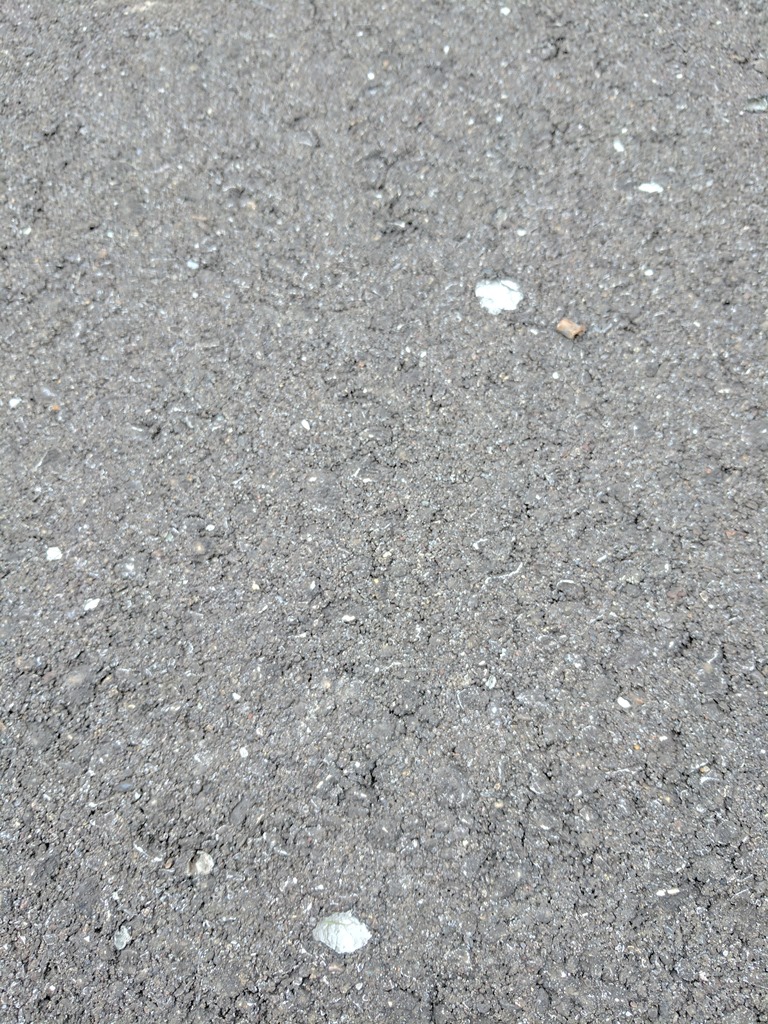
Why do the court surface bumps appear?
Asphalt is a porous pavement and will allow sub-surface moisture to breathe through it. Acrylic sport surfacing systems are semi-permeable and will also allow a moderate amount of moisture to breathe through and escape. Properly constructed courts should be pitched at 1% for drainage, but there is still ground moisture that travels up through the slab. When the surface of the court is heated from the sun, it draws moisture up from beneath the court in a vapor state. As the moisture is migrating through the asphalt, it is absorbed into the clay deposits and the acrylic surfacing layers slow down the escape. During the process, the clay balls swell and create the visible lumps on the surface.
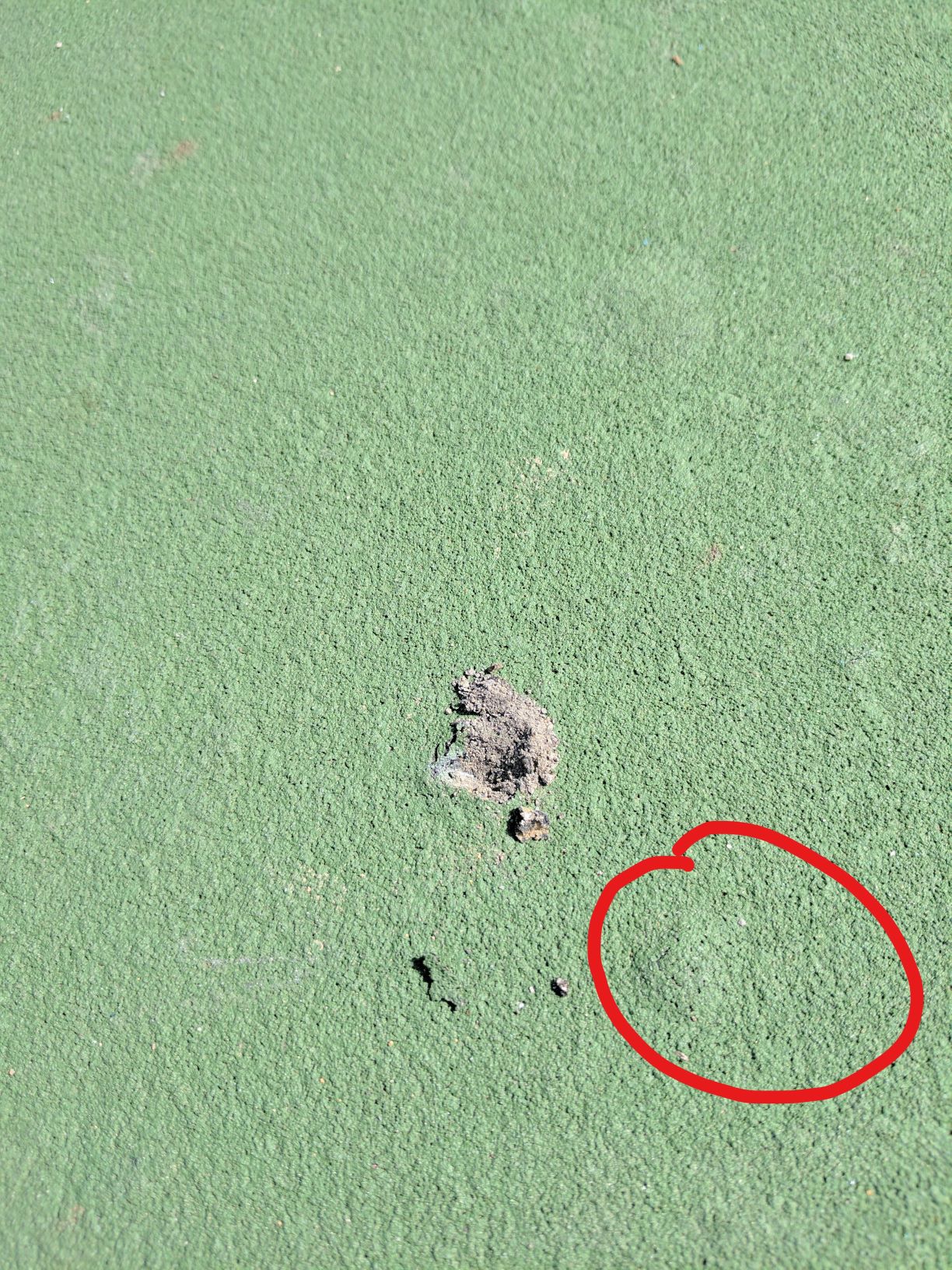
How to remove clay balls from court surface
So, how do you remedy the situation and remove clay balls from the court surface? This is usually just an aesthetic issue and normally not a problem that will affect play and the ball bounce. If it becomes a problem, or when it is time to resurface the court, the following procedures can be performed:
- Scrape the surface bumps with a long-handled scraper, or similar tool, to open and expose the clay deposits.
- Use a pressure washer to blast out the clay or foreign materials
- Apply SportMaster Acrylic Crack Patch or Acrylic Patch Binder mix to fill the void and level to the surface.
- Resurface the court with the standard SportMaster coating system
If the clay balls are not creating issues with play and you can wait to remediate the clay balls situation, it will allow time for any potential swelling reactions. If you do this as soon as it happens, and resurface the court, others may pop up shortly after. You can remove them as they show up, but you will likely see the touch-up from the different of texture and color.
Avoid Recycled Asphalt For Sport Surfaces
Other asphalt impurities can also create problems with court surfaces. If possible, avoid using recycled asphalt as it may contain unknown foreign items (i.e. shingles and other various materials). It is also important to seek out experienced sport construction companies, as they may know what quarries to avoid based on past history of clay deposits and foreign materials. Contact us for free referrals to qualified installers.

